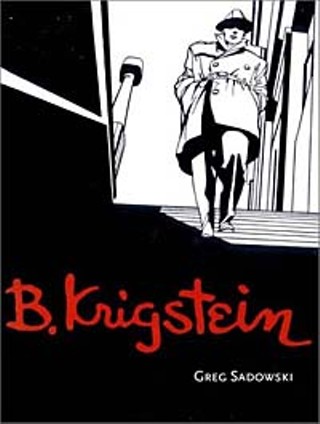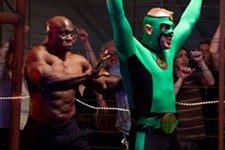B. Krigstein Volume 1
Reviewed by Marc Savlov, Fri., Aug. 16, 2002

B. Krigstein Volume 1
by Greg SadowskiFantagraphics, 272 pp., $49.95 I was 13 years old when I came across a stack of molding and coverless comic books in the backroom gloom of a secondhand bookshop in New Mexico. They stank of cat drizzle and had obviously seen the business end of the local vermin populace, but the sun-bleached inking and precise lettering style caught my eye. Miraculously, I had stumbled upon some 40-odd random issues of EC Comics, the groundbreaking and fabled 1950s company that brought the world titles like -- choke, gasp -- Tales From the Crypt, Crime SuspenStories, and Weird Science. Even in their dog-eared state, the discovery was to me a treasure akin to Tutankhamen's; I coughed up $10 for the lot and went on a mad comics jag that echoes to this day. I favored the horror comics, but one non-Crypt keeper tale from the March, 1955, debut issue of a title I'd never heard of -- Impact! -- knocked me for a loop. The story was "Master Race" by a sometime EC artist who signed his work B. Krigstein, and the name fit the style to an expressionistic "T." The story of a former Nazi death-camp commandant recognized by one of his old charges while riding the subway was all weird angles and staccato, oddly juxtaposed paneling. Utterly nontraditional in every respect, "Master Race" announced (to the precious few willing to listen at the time) that the popular lowbrow medium of comic books could aspire to the higher calling of Art. Sure, the kids already knew that in an offhand way, but his was something that made even adults take notice.
"Master Race," reprinted in its entirety, is the centerpiece of this superb and lavishly illustrated biography of Bernard Krigstein, a Brooklyn native whose artistic life was a constant battle between the paying, commercial gigs he felt little affection for (including his comic-book work) and the terminally unprofitable still-lifes, landscapes, and often unnerving portraiture that he labored over obsessively throughout his life. Examples of both are plentiful here, and while his forays into comics are interesting and occasionally exciting, Krigstein's gouaches, etchings, watercolors, and especially his oils are riveting in their audacious use of color, shadow, proportion, and (a)symmetry. "In the comics field, [Krigstein] functioned not as an illustrator. ... He functioned as an artist," is the quote from comics authority Bhob Stewart that leads off B. Krigstein, and it pretty much sums the man up as succinctly as possible. Not so of Sadowski's exhaustively researched book, which compiles everything from Krigstein's old WWII letters home (to wife and frequent portrait subject Natalie Krigstein) to his early magazine spot art, greeting-card work, wartime sketches, paintings, sculptures, and yes, his comics art. The ripple effect created by "Master Race" 47 years ago has since swollen into a tsunami of undeniable influence. Echoes of Krigstein's heavily stylized artistry is apparent in current comics artists from Adrian Tomine (Optic Nerve) to Art Spiegelman (Maus) and beyond, and the indie-comic boom of the early Nineties might well have looked a whole lot different were it not for that eight-page story. (Krigstein's battle for those two extra pages -- comics at the time generally ran to six pages, tops -- is recounted in Sadowski's book.) Virtually unknown outside of the comics medium to this day, Bernard Krigstein finally gets his due in spades, and it looks damn snappy on the coffee table, to boot.










